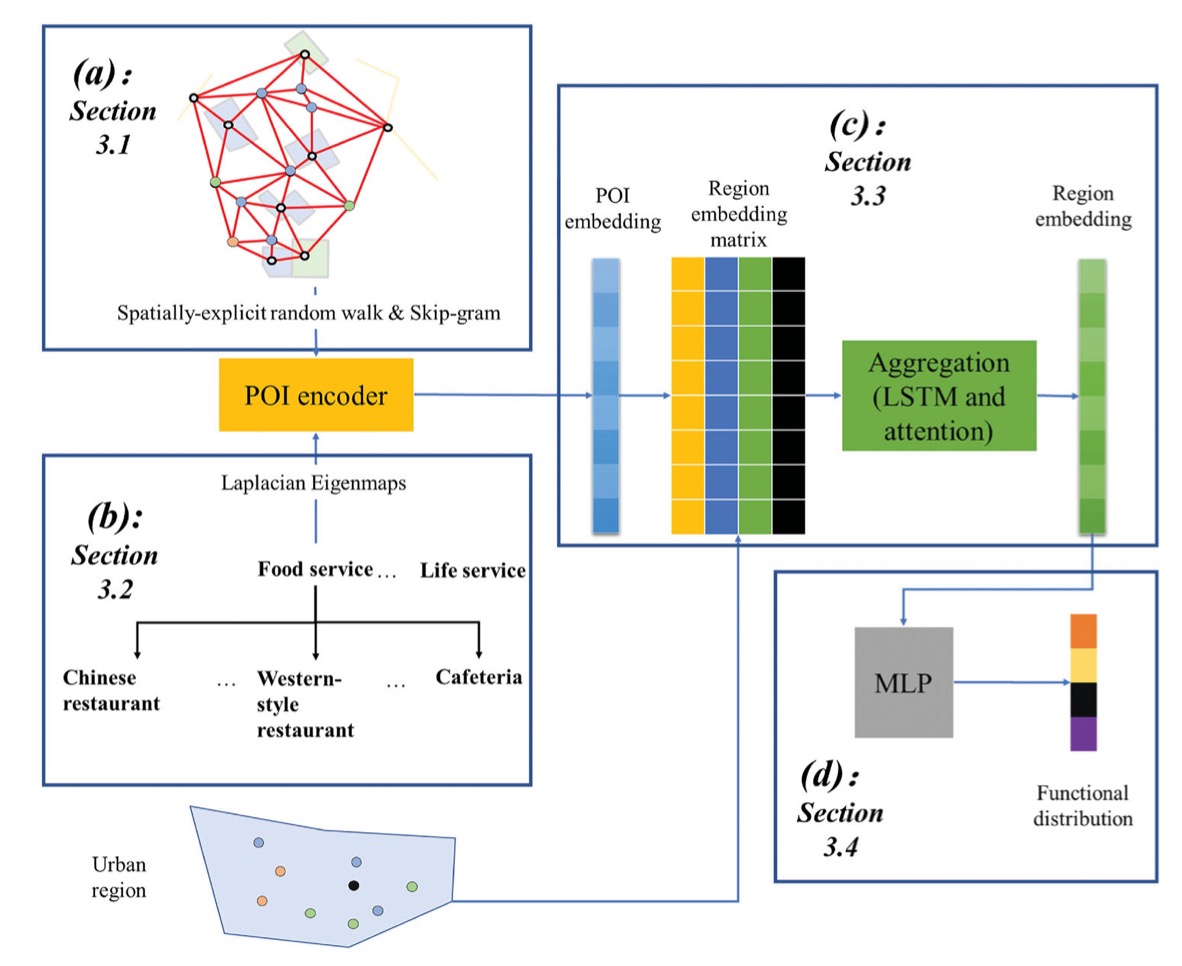Abstract
We present a novel approach for estimating the proportional distributions of function types (i.e. functional distributions) in an urban area through learning semantics preserved embeddings of points-of-interest (POIs). Specifically, we represent POIs as low-dimensional vectors to capture (1) the spatial co-occurrence patterns of POIs and (2) the semantics conveyed by the POI hierarchical categories (i.e. categorical semantics). The proposed approach utilizes spatially explicit random walks in a POI network to learn spatial co-occurrence patterns, and a manifold learning algorithm to capture categorical semantics. The learned POI vector embeddings are then aggregated to generate regional embeddings with long short-term memory (LSTM) and attention mechanisms, to take account of the different levels of importance among the POIs in a region. Finally, a multilayer perceptron (MLP) maps regional embeddings to functional distributions. A case study in Xiamen Island, China implements and evaluates the proposed approach. The results indicate that our approach outperforms several competitive baseline models in all evaluation measures, and yields a relatively high consistency between the estimation and ground truth. In addition, a comprehensive error analysis unveils several intrinsic limitations of POI data for this task, e.g. ambiguous linkage between POIs and functions.
Keywords
Urban function; point-of-interest; POI-region embedding; spatial co-occurrence; categorical semantics
Full Text Download
Q.E.D.










